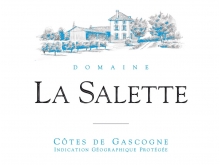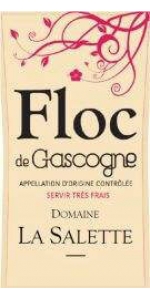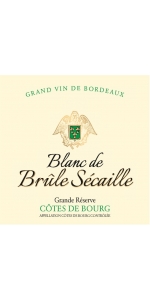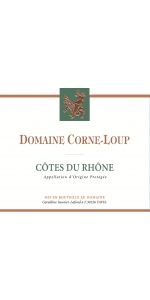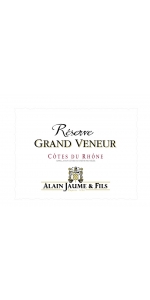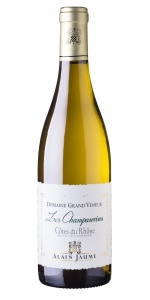Salette Cotes de Gascogne Blanc 2024
12 bottles with free shipping for: $180.00
| BUY MORE! SAVE MORE! | ||||||||||||||||
|
Salette Cotes de Gascogne Blanc is made from 80% Colombard, 10% Ugni Blanc and 10% Gros Manseng.
Fresh, clean and lively with intense exotic fruit aromas. Crisp, clean and zesty in the mouth, it offers delicate flavors of citrus fruit and grapefruit, and a long lingering finish.
Enjoy as an aperitif or with grilled fish, shellfish and appetizers.
Domaine de la Salette Estate
This family owned and operated winery has been producing wine since 1971. The estate is located near the town of Condom, in the Armagnac area of southwest France. Current owner Michel Duffour started in 1982 and was joined by his son Nicolas in 2005. They continue the traditional winemaking of the family while using new techniques such as skin contact maceration and cold stabilization. They also make use of enologists from Bordeaux to create their cuvees. They export 80% of the total production.
The Domaine de la Salette Vineyard
The estate measures 32 hectares (79.04 acres) with 30 hectares of white grapes and 2 hectares of red. The soil is clay and limestone based. The average age of the vines is 20 years. The continental climate ensures optimum ripening of the grapes.
Salette Floc Gascogne Blanc NV is made from 1/3 of Armagnac and 2/3 Colombard fruit juice
Intense fruity and floral aromas. Round, fresh and fruity in the mouth. Almond, jasmine, roses, honey, black fruit and condiments are characteristic notes.
The alcohol percentage is between 16–18 % vol. After blending, the Floc is kept for 10 months in the cellar of the producer and must be approved by a committee of experts before it can be sold under the appellation Floc de Gascogne.
It is used as an aperitif most often, but also as a dessert drink. It should be consumed while cool, and is suberb on ice.
All older vintage wines have been purchased from a single collectors cellar. Pictures can be requested before shipment.
Brulesecaille Blanc Grande Reserve is made from 75% Sauvignon Blanc, 25% Sauvignon Gris.
Average age of the vines is 25 years.
Manual harvest from September 19th-20th 2016.
Direct press at low pressure (whole cluster) with low amount of SO2, settling at 10°C.
Addition of yeast and alcoholic fermentation in casks 400 liters.
Raised on the lees for 6 months with regular batonnage (stirring of the lees).
Bottling in april 2017.
Fish, seafood, white meats, fine goat cheeses.
Corne Loup Cotes du Rhone Blanc is made from 50% Grenache Blanc, 20% Clairette, 15% Roussanne and 15% Viognier.
The wine has a pale straw color with brilliant reflection. In the nose, it displays great aromatics, mainly citrus fruit. The palate is well balanced, with a lot of finesse and persistence.
Delicious when paired with seafood (seashell and fish). It is also great by itself as an aperitif.
Grand Veneur Cotes Du Rhone Blanc is made from 50% Viognier, 30% Clairette, 20% Roussanne.
Pale yellow colour, brilliant with a gold tinge. Primary aroma of flowers and stone fruit. On the palate, the fruit is immediately present with touches of almond and white peach. A slight liveliness appears in the finish, which creates a perfect balance for the natural generosity of this wine.
To consume young in order to preserve the fruitness typicity. Could age 2-3 years
Direct press, fermentation in temperature controlled stainless-steel vats. Early bottling 6 months after harvest.
Excellent with fish, seafood.
Grand Veneur Cotes Du Rhone Les Champauvins Blanc is made 100% Viognier. Located in the area known as "Les Champauvins", close to Domaine Grand Veneur. The soils are clay-sand and limestone. They enable the white grape varieties to ripen slowly, thus preserving their excellent aromatic finesse.
A great Viognier, conceived and produced with finesse and freshness in mind. Bright, limpid pale yellow color. Intense, delicate nose of floral and white-fleshed fruit aromas. Fresh, mineral and airy on the palate. White peach and pear aromas are the most expressive. The fruity characters are long-lasting, evolving into notes of apricot after a few hours' aeration.
- back
All older vintage wines have been purchased from a single collectors cellar. Pictures can be requested before shipment.
Ancien Pinot Noir is 100% Pinot Noir.
The Mink Vineyard is located next door to the winery, in the Coombsville Viticultural Area of Napa Valley. Open to the same morning fogs and afternoon breezes that cool Carneros to the west, Coombsville is consistently one of the coolest pockets in Napa. Mink sits inside a small “bowl”, allowing cooler air to settle during the evenings, and making Mink’s mesoclimate a couple degrees cooler, even, than the surrounding hills. But the real secret to Mink’s explosive flavors, smooth, mouth-coating minerality, comes from the soil. Underneath is a layer of compressed volcanic ash, called tufa. The tufa drains the topsoil, storing moisture in its porous structure. The vines are able, with some work, to grow roots into the tufa layer, accessing moisture during the long, dry growing season.
The Mink Pinot Noir exhibits bright and refreshing notes of pomegranate, cherry, and fresh herbs. It gradually opens to deeper and darker berry fruit, blueberry and plum. This vintage is on the more structured side of the spectrum and will continue to evolve over time. Its enchanting mouthwatering minerality invite sip after sip together with bite after bite. A lively wine at release but it will continue to improve over the next 4 - 7 years and can age well beyond a decade as shown by its 20+ year track record.
Review:
"Ripe in flavor and luxurious in texture, this wine is difficult to put down. It is saturated in black cherry, black currant and black fig while staying light on the palate. It's a wonderful indulgence to enjoy by itself or with a roast pheasant or duck breast. — Jim GORDON"
- Wine Enthusiast (April 1st 2024), 95 pts

